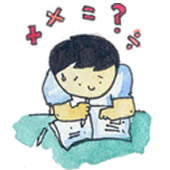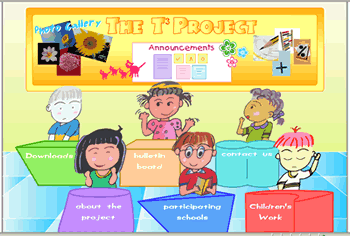Think-Things-Through: Sense-Making Through Mathematical Word Problems
Word problems are used extensively in the Maths classroom. Unfortunately, they don’t always contribute to effective learning.

In Singapore, school textbooks are limited to a narrow range of typical word problems that don’t really promote critical thinking or analysis. As a result, pupils tend to suspend their ability to make sense when solving such problems.
Think-Things-Through aims to help pupils better solve such problems by promoting the use of word problems that take the situational contexts of teachers and students into consideration.
Now into its second year of implementation, the goal of this project is to move from merely teaching thinking skills to developing thinking habits and a thinking culture.
Problems with words
 There are two kinds of word problems used in teaching mathematics today. Standard word problems are those that can be solved by merely operating on the numbers provided. The situation of the problem plays no role in the final solution (see Example 1 below):
There are two kinds of word problems used in teaching mathematics today. Standard word problems are those that can be solved by merely operating on the numbers provided. The situation of the problem plays no role in the final solution (see Example 1 below):
Example 1:
Each box contains 4 pieces of cookies.
How many boxes are needed to contain 36 cookies?
On the other hand, non-standard word problems are problems where the situation plays an important role in the final solution. For example, the problems below involve the same computation, but have different final solutions because of their context.The solution can be obtained by operating on the numbers (36 / 4).
Example 2:
Each bottle holds 100 ml of cough syrup.
At least how many bottles are needed to hold 980 ml of cough syrup?
Example 3:
Each bottle holds 100 ml of cough syrup.
At most how many full bottles can you get from 980 ml of cough syrup?
What we’re doing
Although both involve the same operation (980 / 100), the solution for the first problem is 10 while that for the second problem is 9.
Researchers are currently using three kinds of non-standard word problems to investigate three types of thinking that students use.
One set of materials engages students in situations where undercounting or overcounting is possible.
Example 4:
In a Maths lesson, a group of children are asked to make numbers.
Each number must be less than 100.
The digit 5 must be used at least once.
How many 2-digit numbers used the digit 5 at least once?
Another set of materials engages students through qualitative information. In solving this problem, pupils need to consider possible relationships among the children as well as their gender.An example of a direct systematic method would be to count numbers that start and end with 5. To solve this problem successfully, pupils have to consider the fact that 55 appears on both lists.
Example 5:
Alvin has 2 brothers.
Brian has 2 brothers.
Chris has 2 brothers.
Alvin, Brian, Chris and their brothers went into a van.How many boys are there in the van?
A third category of materials encourages students to think beyond one-dimensional space. Ai Ling says that the answer is 9. Basri says that the answer is 8. Chandra says the answer is 10. All of them could be correct.
Example 6:
Once upon a time, there were three magic towns—Arahus, Beramus and Cicadus. A clever bird flies from one town to another.
The clever bird always flies the shortest distance possible.The bird travels 5 km from Arahus to Beramus.It travels 4 km from Arahus to Cicadus.How far does the clever bird travel from Beramus to Cicadus?
In solving this problem, students need to consider the possibility that the three towns are not in a straight line.
Where we go from here
This study has currently completed its first year of implementation, involving 37 teachers and 1,480 Primary 3 pupils. During this time, researchers collected baseline data on how teachers teach word problems and the pupils’ abilities and belief systems about school maths.
Next, the researcher team would like to focus on how teachers use the intervention materials: how it influences their pedagogical practices, the Maths classroom culture, and the pupils’ ability to make sense during word problem solving.






